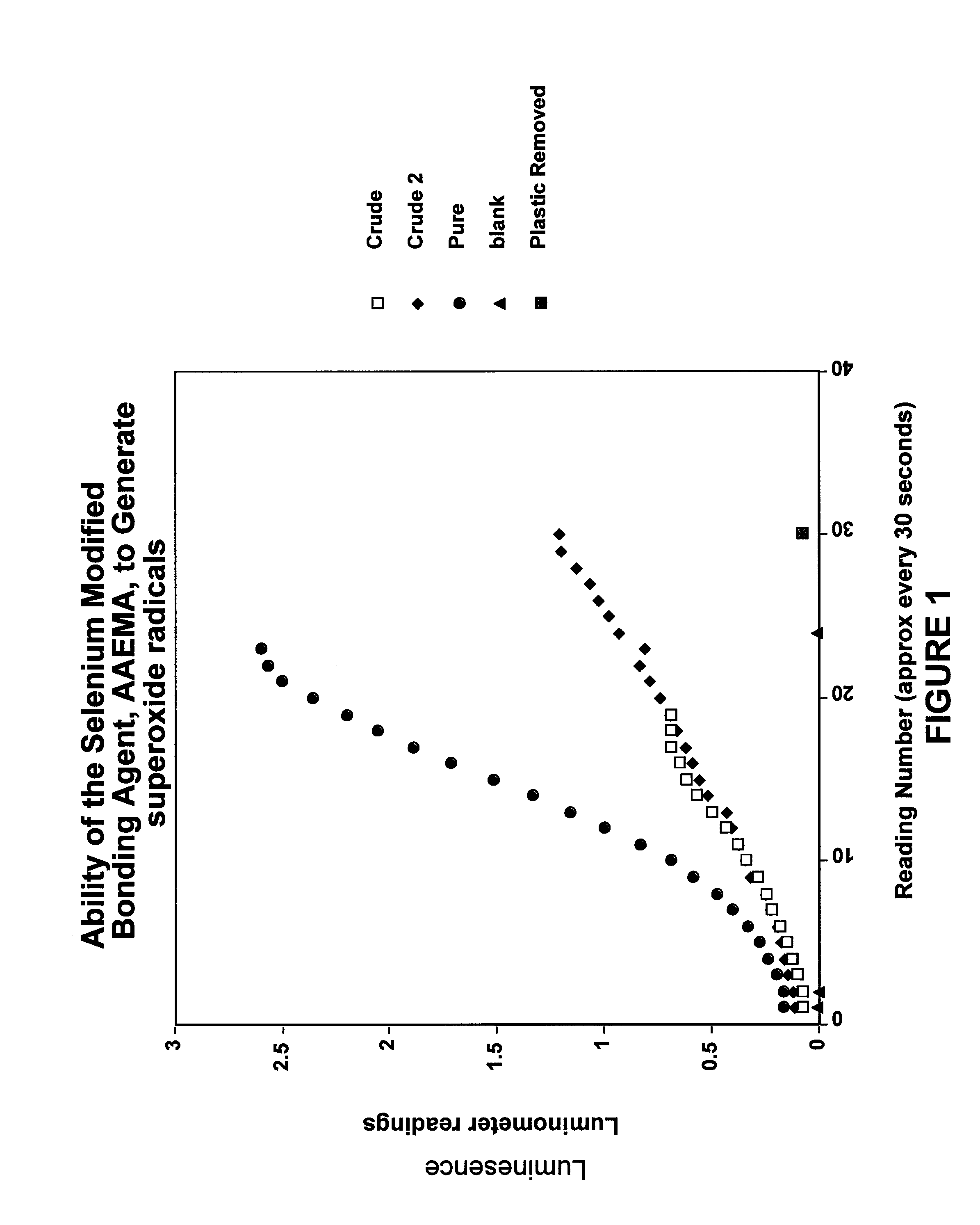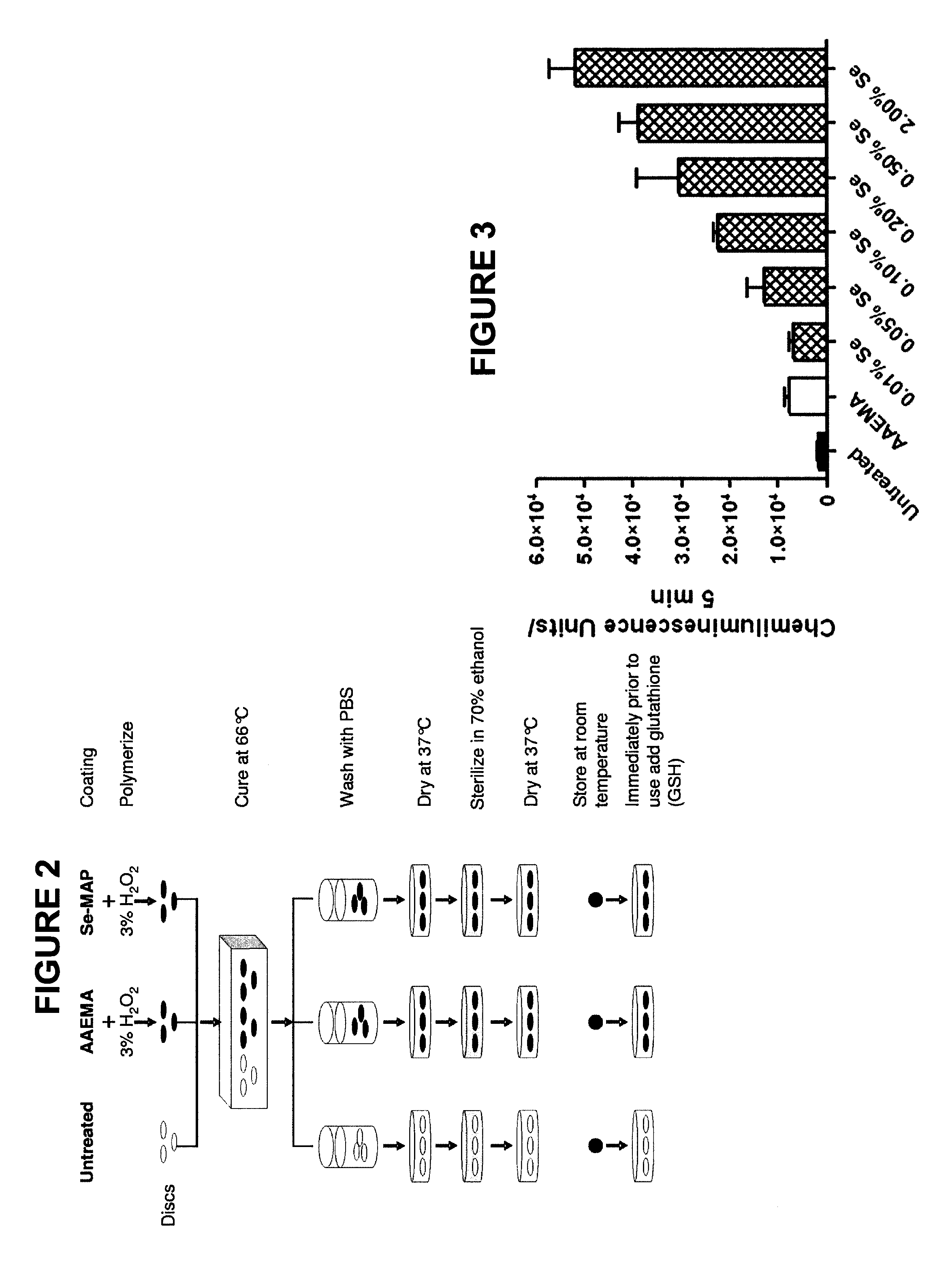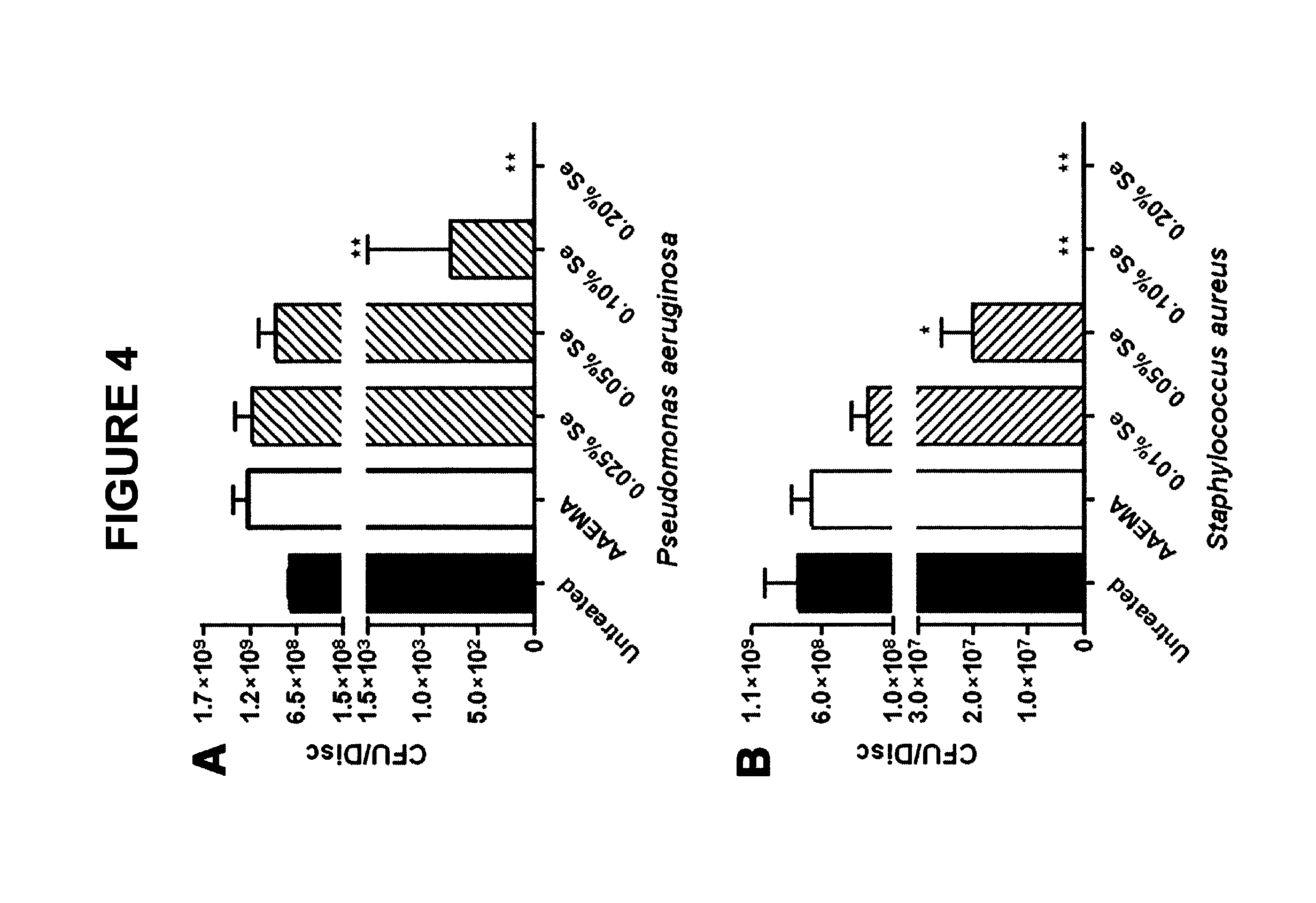Selenium-based biocidal formulations and methods of use thereof
a technology biocidal methods, which is applied in the field of selenium-based biocidal formulations, can solve the problems of severe livestock loss in parts of the western and central united states, the ingestion of selenium-containing plants by livestock often proved fatal, and none of these theories of selenium toxicity proved satisfactory in fully explaining the toxic effect of selenium
- Summary
- Abstract
- Description
- Claims
- Application Information
AI Technical Summary
Problems solved by technology
Method used
Image
Examples
example 1
Selenium Content and Superoxide Activity Analysis for Bandage Coating
[0091]To 150 g of a standard sample of a non-latex cohesive formulation (Andover Coated Products, Inc., Salisbury, Mass.), 0.9 g of the organoselenium-methacrylate compound (selenocyantoacetoxy)butoxyethyl methacrylate (SCABEM) was added drop-wise with mixing, resulting in a cohesive solution having 0.00126 gram Se / gram soln. (0.9 g / 150 g non-latex cohesive=0.006 g SCABEM / g ctg; Se is 21% by weight of SCABEM=0.006 g×0.21=0.00126 gram Se / gram soln.). A portion (3.43 g) of this sample was drawn onto a composite cohesive elastic bandage (Andover Coated, Inc., Salisbury, Mass.), air dried for 5 min and then flash dried for 2 min at 100° C. From this composite drawdown, a 10 cm by 30 cm section was cut and then further cut into 1 cm squares for testing. In theory, 3.43 g of this SCABEM-containing solution distributed evenly across the 300 cm2 sample should result in 0.0000144 g Se / cm2 (i.e., 1.44×10−5 g Se / cm2=3.43 g so...
example 2
Selenium Attachment to Intraocular Lenses (IOLs)
[0098]The ability to non-covalently attach a selenium compound of the present invention to a plastic was demonstrated using an intraocular lens (IOLs). An intraocular lens (or IOL) is an implanted lens in the eye, usually replacing the existing crystalline lens because it has been clouded over by a cataract, or as an alternative to refractive surgery when this procedure is contraindicated. IOLs are typically formed of a plastic such as but not limited to, acrylic, silicone or polymethyl methacrylate (PMMA).
[0099]In this Example, 6 mg / ml of diphenyl diselenide (DPDS) was added to the IOL, and the mixture was heated at 50-52.5° C. for 30 minutes. The treated IOLs were then removed from the solution and allowed to dry. Table III demonstrates that this procedure resulted in a lens that produced chemiluminescence with no significant leaching of the selenium compound, and therefore temperature and mixing achieved selenium labeling by hydroph...
example 3
Non-Covalent Attachment of Selenium to Hydrogel Lenses
[0107]Contact lenses are worn by approximately 90 million people worldwide. Early contact lenses were required to be taken out of the eye daily for removal of accumulated protein and lipids discharged by the eye and for sterilization. In addition, poor oxygenation of the cornea, caused by the relatively low oxygen transmissibility of early conventional hydrogel lenses, also limited wearing time. Whereas the great majority of contact lens wearers still remove their lenses daily, the recent arrival of silicone hydrogel lenses, which provide greater oxygen transfer to the cornea, allow the longer term 30-day wear that is now permitted by the FDA. However, despite the improved corneal physiology provided by the new highly oxygen permeable 30-day lenses, bacteria that cause acute red eye or even corneal ulceration are still a clinical concern.
[0108]When a contact lens is placed on the eye, the surface of the contact lens is colonized ...
PUM
| Property | Measurement | Unit |
|---|---|---|
| Mass | aaaaa | aaaaa |
| Mass | aaaaa | aaaaa |
| Mass | aaaaa | aaaaa |
Abstract
Description
Claims
Application Information
 Login to View More
Login to View More - R&D
- Intellectual Property
- Life Sciences
- Materials
- Tech Scout
- Unparalleled Data Quality
- Higher Quality Content
- 60% Fewer Hallucinations
Browse by: Latest US Patents, China's latest patents, Technical Efficacy Thesaurus, Application Domain, Technology Topic, Popular Technical Reports.
© 2025 PatSnap. All rights reserved.Legal|Privacy policy|Modern Slavery Act Transparency Statement|Sitemap|About US| Contact US: help@patsnap.com



